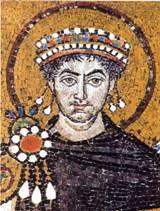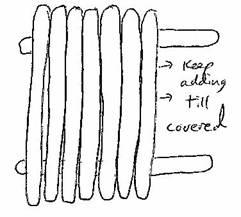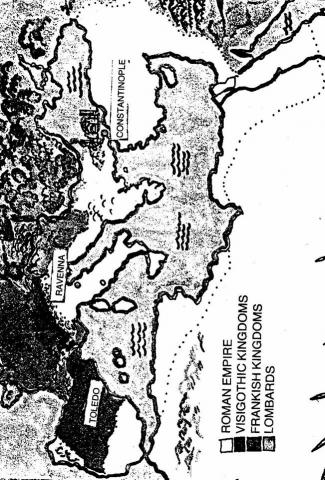Justinian and the Byzantine Empire
THE BYZANTINE EMPIRE UNDER JUSTINIAN

Objectives:
- Students should know the name of the Byzantine Empire and its capital, Constantinople.
- Students should be able to name Justinian as a wise Emperor and list 2-3 of his accomplishments.
Possible Lesson Plan:
- Open with prayer.
- Tell the story of the Byzantine Emperor and Justinian:
About 50 years after the fall of Rome, Justinian became emperor in the East. In this day, Constantinople was the greatest city in the world. The waters around the city were filled with boats; it had high walls to protect it from enemies. People came from all over the world to see the beautiful city and study in its many famous schools and worship in its churches. Justinian saw his city as the Second Rome, greater and finer than Rome ever was.
Justinian also began to collect all the laws of his land. Until this time, each city and state had its own rules and judges. Justinian sent wise lawyers throughout the land and gathered all these laws. They chose the best from each city and wrote a law that would be true throughout the land, the Code of Justinian.
Justinian wanted to take back the lands of the west that had been lost to the barbarians. He first sent his mighty army against the Vandals in North Africa. He took back northern Africa and went from there to Italy and southern Spain. His empire went around the Mediterranean, although he never retook France or England. Review the map on the next page to see the extent of Justinian’s empire.
Justinian also had architects throughout his empire build beautiful churches. The greatest of these was Hagia Sophia, the Church of the Holy Wisdom, in Constantinople. This magnificent church is topped with a huge dome. Artists painted beautiful icons and worked mosaics of tiny pieces of stone and glass. A mosaic could cover the entire wall of a church or monastery. Frescoes were painted in wet plaster right onto the walls of churches. Goldsmiths made beautiful jewelry set with precious stones. The Byzantine Empire became the art and cultural capital of the world.
- Get a book from the library and show some pictures of Hagia Sophia and Constantinople (now called Istanbul). Look at pictures of the beautiful mosaic work in Byzantine style – e.g. St. Mark’s in Venice. Do you see how, with the different colors and background fitted together, a beautiful design or picture can be made? Also look a bit at the basilica style of architecture that flourished in Constantinople. The nave was shaped as a square or rectangle. At one end was the door; at the other a curved projection for the altar. One or more domes crowned the church. Some were in the shape of a cross.
- Play a learning game: Final Jeopardy. Print the answers, each on one card. Give each student a pad of paper and a pencil. Show the cards one at a time; students have about 1 minute to write a question to go with the answer. Sample answers:
Justinian
Hagia Sophia
Mosaic
Code of Justinian
- Make a real mosaic cross trivet: First make the base of Popsicle sticks; lay 2 on the table about 3 inches apart and parallel. Cover top of each with glue. Lay others perpendicular from one end to the other to make a smooth work surface. Now cover your base with glue. Take small colored pieces of broken tile (we have lots of this) or small tiles and shape a cross or other picture. Fill in the rest of the square with white tiles. After it dries, spread grout in the cracks; wipe with damp cloth to get film of grout off the tiles before it dries. These can be used for years as a small piece of Byzantine beauty.

- Close with prayer: Lord, give me a love of the beauty of Your Church as Justinian had.
